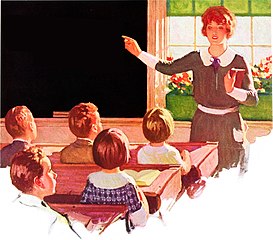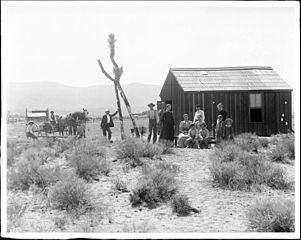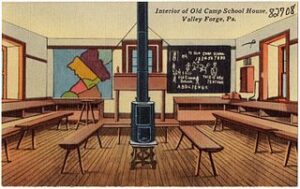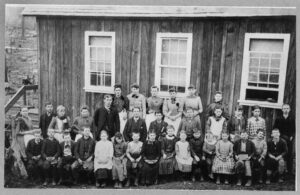
Hawai`i Public School students and teachers went back to their classrooms last Monday, August 1st. I probably will never get used to the present calendar for the school year. I recognize it, without entirely buying into the new system. When I attended school, we started about the third week in August and finished about the middle of June. Though it seemed like summer vacation lasted through the months of June, July, and August, that’s not entirely true. But it did last for eight blissful weeks of doing not very much. I remember during one elementary school summer, I almost completely forgot how to write in cursive. Fortunately, my illegible scrawl came back rather quickly.

There’s nothing intrinsically useful about summer vacation. The earliest American schools were in session all year, if the community could afford it. In fact, public opinion thought the best schools had the most instructional days. Nevertheless, by 1900, the 9-month school calendar was culturally embedded for those children not occupied with earning a living. As the 20th century progressed, child labor became illegal and formal education at least through the 8th grade became standard.
Female Teachers
Besides children, schools require teachers, and there were strong opinions about who could or should teach. A 1772 advertisement in the Virginia Gazette indicated a need for “a sober diligent schoolmaster capable of teaching reading writing, arithmetic and the Latin tongue.” Applicants were expected to be male. The applicant might be an educated farmer who wanted employment during the off-season, or, more commonly, a young man who needed to earn money for further education. Women taught in dame schools for young boys and girls, and at academies for female education in music and other accomplishments, but schoolmasters were male.
By the middle of the 19th century, attitudes regarding the superiority of male teachers continued, but the growth of Common Schools required more teachers, and women could fill the gap. The Littleton School Committee noted: “God seems to have made woman peculiarly suited to guide and develop the infant mind, and it seems…very poor policy to pay a man 20 or 22 dollars a month, for teaching children the ABCs, when a female could do the work more successfully at one-third of the price.”

But were women up to the job? Many female teachers had only completed the 8th grade and were as young as age 14. Could these girls keep order in a class that might include a hulking 18-year-old farm boy who attended in the off-season? Reformers concluded that with the benefit of a Normal School education dedicated to teacher training, they could. Graduates of Normal School programs frequently found themselves in a one-room school house with as many as 60 students of various ages and grades teaching a curriculum based on reading, writing, and arithmetic with bits of geography, history, and citizenship thrown in. Despite the low pay and less than ideal working conditions, women enthusiastically entered the profession, grateful for a salary and sense of independence.
But how independent were teachers? Their supervisors were male. The curriculum was out of their hands. And the rules and requirements kept these young women in their social place.
A smattering of late 19th/early20th century rules of teachers demonstrates duties and expectations.
A Teacher is Responsible for her School Room

- She should arrive early enough to light the fire and warm the room before her pupils arrive.
- And, she is required to be in the school room fifteen minutes before the time fixed for the session to begin.
- She must check outhouses daily.
- On a weekly basis, she must wash the windows and clean the classroom with soap and water, as well as cleaning the lamps and chimneys.
- On a daily basis, the she must sweep the floors and clean the blackboards
A Teacher is Above Reproach
- After 10 hours in school, teachers may spend the remaining time reading the Bible or other good books.
- Any teacher who smokes, uses liquor in any form, frequents pool or public halls, or (in the case of a few male teachers) gets shaved in a barber shop will give good reason to suspect her or his worth, intention, integrity and honesty, and can be immediately dismissed. Nor should a teacher loiter in town in an ice cream store.
- Female teachers may also be dismissed if they marry or engage in other unseemly behavior including joining a feminist movement, such as the suffragettes
- Female teachers are not allowed to wear bright colors, a bathing costume, bloomers for cycling, skirts that expose the ankles, or a bustle extension over 10 inches. Females may not dye or cut their hair short.

- Male teachers may not wear a detachable collar and/or necktie removed froth shirt, appear in shirt sleeves that were unlinked and rolled up, or have their hair closely cropped unless they were bald or had a scalp disease.
- Female teaches may not keep company with men, or ride in a carriage or automobile with any man who was not her father or brother.
- On the other hand, male teachers may take one evening a week in order to court an appropriate young woman. If the teacher attended church regularly, he could take two evenings a week.
- Otherwise, teachers should be at home between 8:00 p.m. and 6:00 a.m., unless attending a school function. (Since teachers generally boarded at the various homes of their pupils, this was easy to monitor.)
In the Classroom, a Teacher . . .
- Makes pens and pen nibs for the students. Pen nubs should be whittled to individual preference.
- Begins morning exercises with a short Bible reading without comment. This can be followed by singing
- Exercises kind disciple without partiality and endeavors to correct all misconduct.
Teachers who faithfully follow all the rules and give good service for 5 years may receive a 25 cent per week pay increase. Many teachers hoped to marry or be in another profession before the 5 years were over.
It’s interesting to note that overall, school districts were far more concerned with rules than education. Schools have changed a lot since 1900, but giving teachers extra jobs to do at the expense of education is still common, and teachers still provide school supplies, as needed, for their pupils.

Illustrations
Teacher points to blackboard. 1924.
Beach Volley Ball.
Desert School House.
Interior Old Camp School House, Valley Forge PA
Students & Teachers, Maple Valley School. 1891.
Emoji from Noto Project.
Timeline. Only a Teacher. PBS
Rose Heichelbech. “The Strange and Strict Rules Teachers had to Follow in 1800s.” Dusty Old Thing.
Elizabeth Russel. “‘Check Outhouses Daily’: The Retro Teacher Rules.” We Are Teachers. Feb 20, 2018.
James Pederson. “The History of School and Summer Vacation.” Journal of Inquiry & Action in Education. 5 (1). 2012

Sandra Wagner-Wright holds the doctoral degree in history and taught women’s and global history at the University of Hawai`i. Sandra travels for her research, most recently to Salem, Massachusetts, the setting of her new Salem Stories series. She also enjoys traveling for new experiences. Recent trips include Antarctica and a river cruise on the Rhine from Amsterdam to Basel.
Sandra particularly likes writing about strong women who make a difference. She lives in Hilo, Hawai`i with her family and writes a blog relating to history, travel, and the idiosyncrasies of life.

